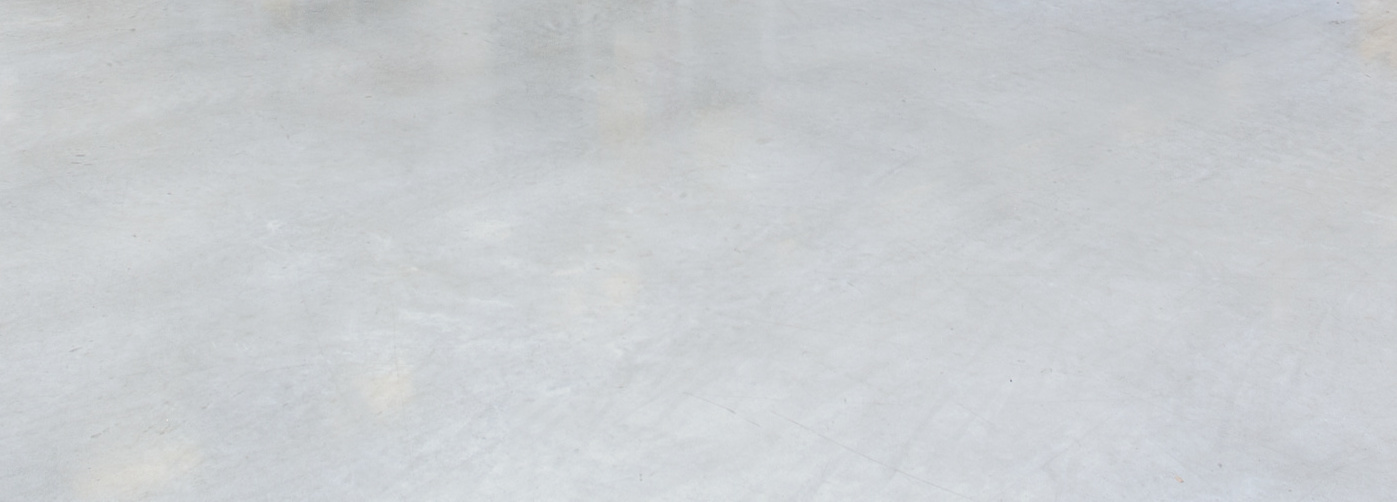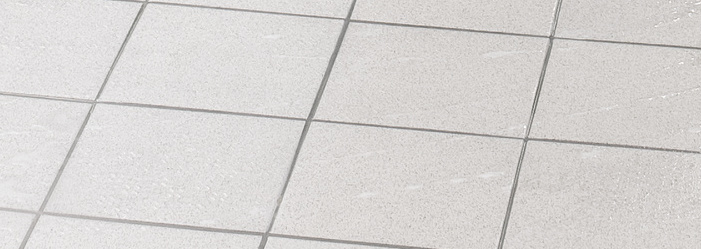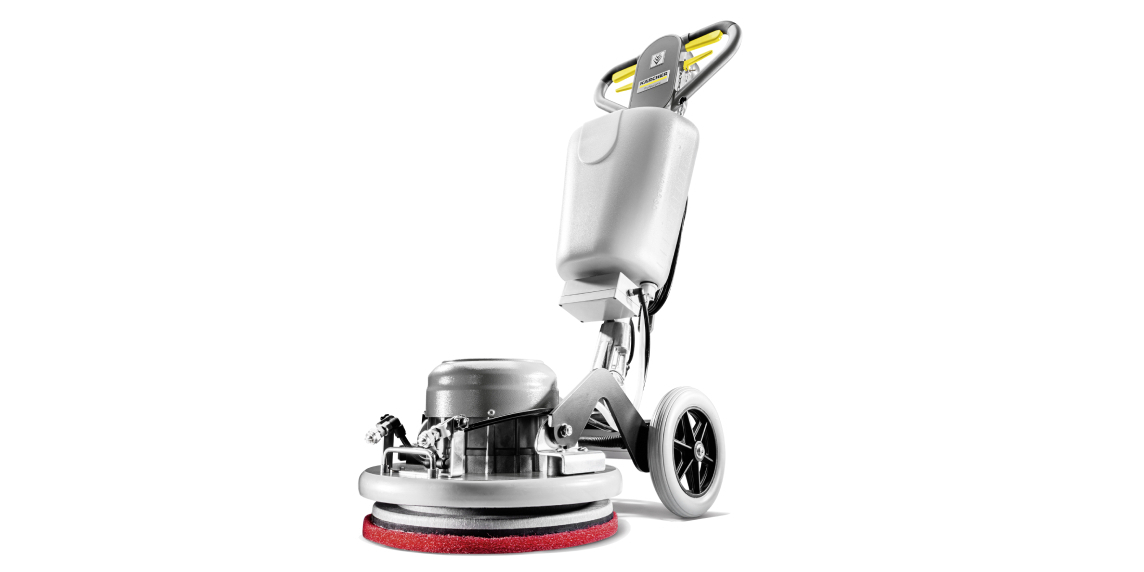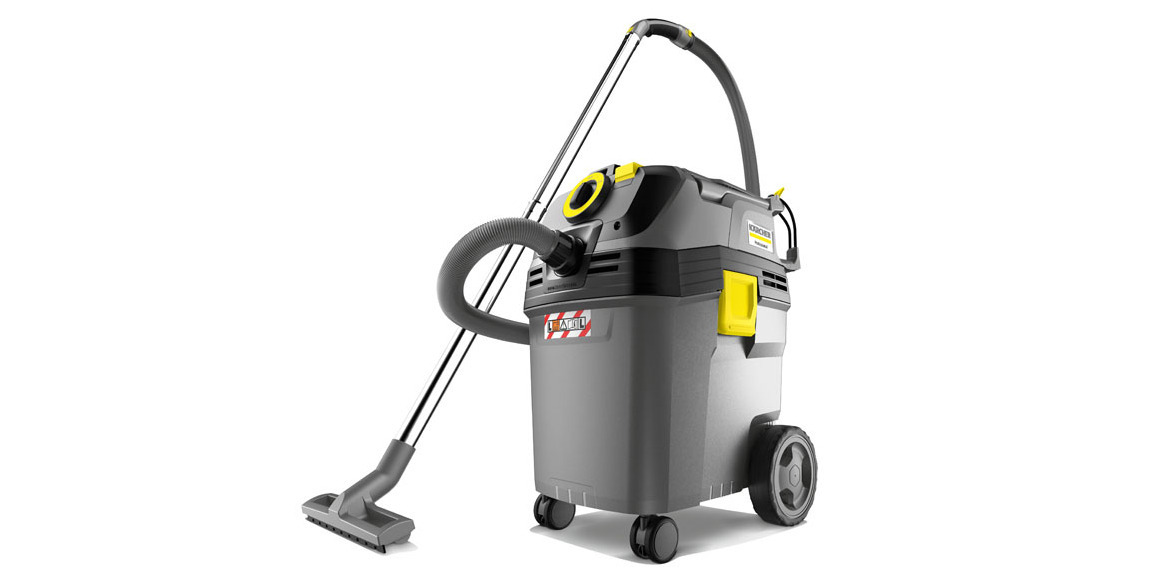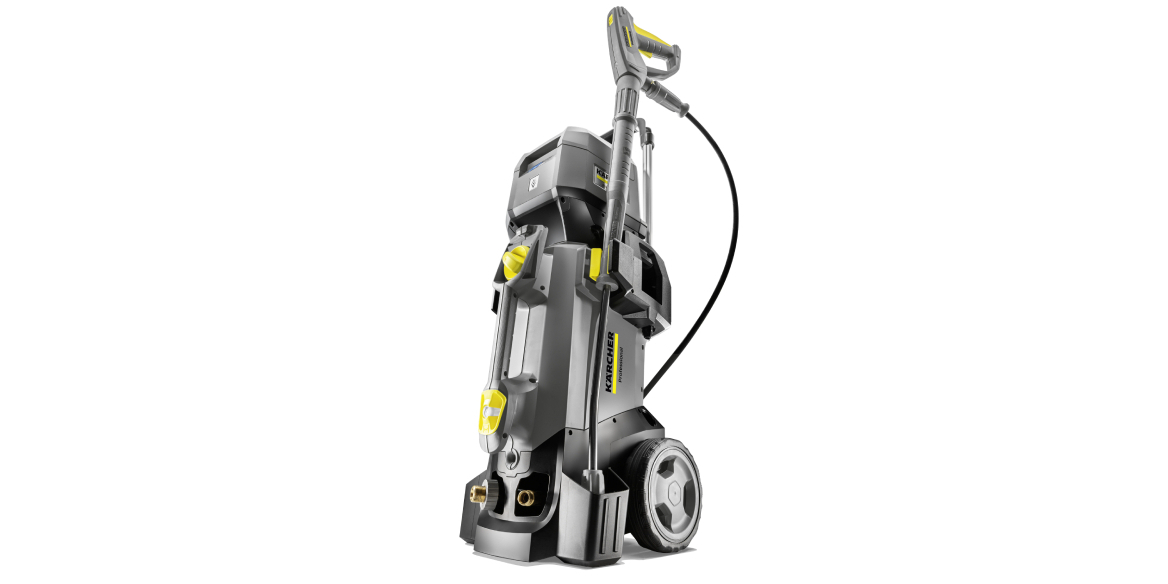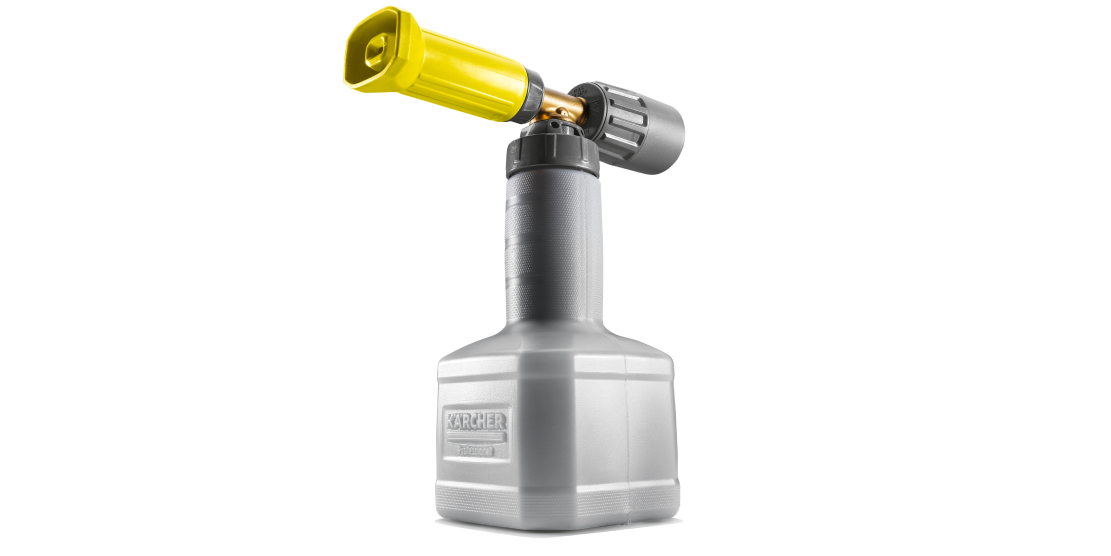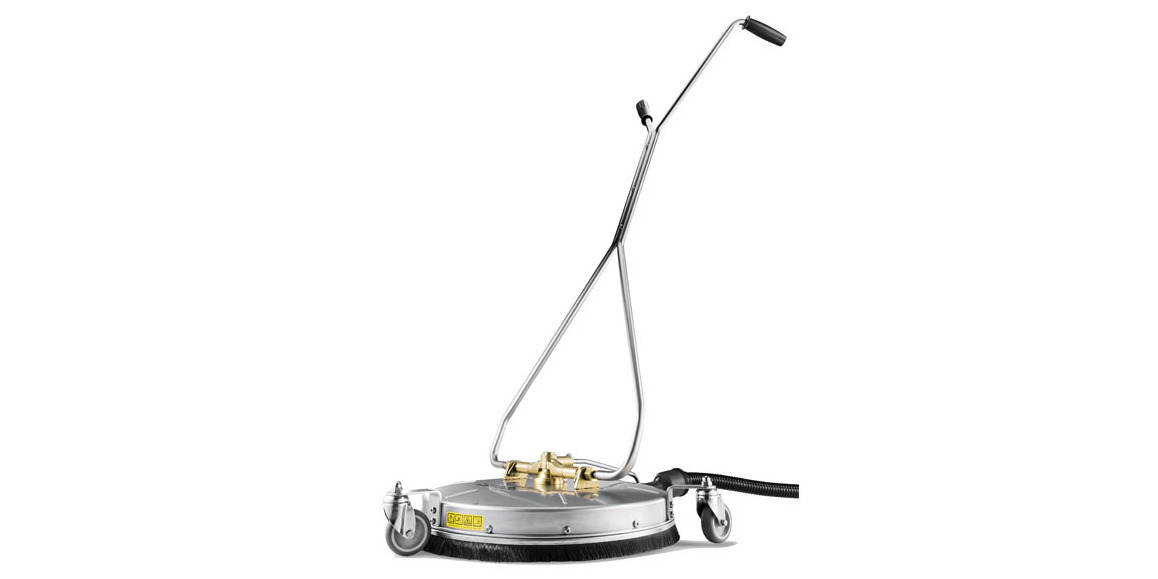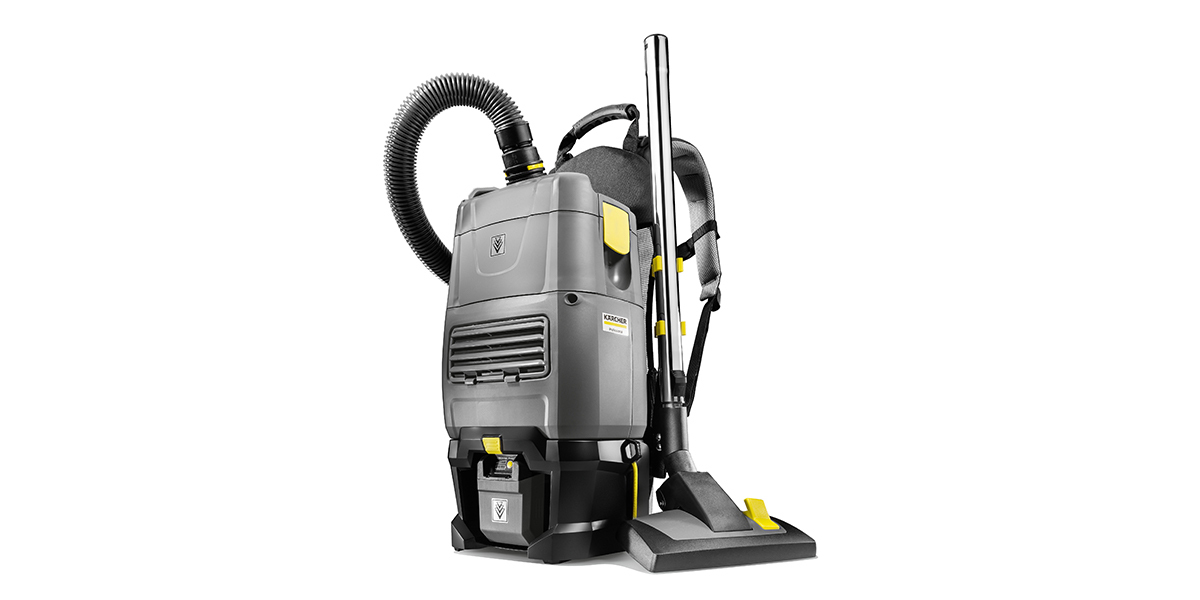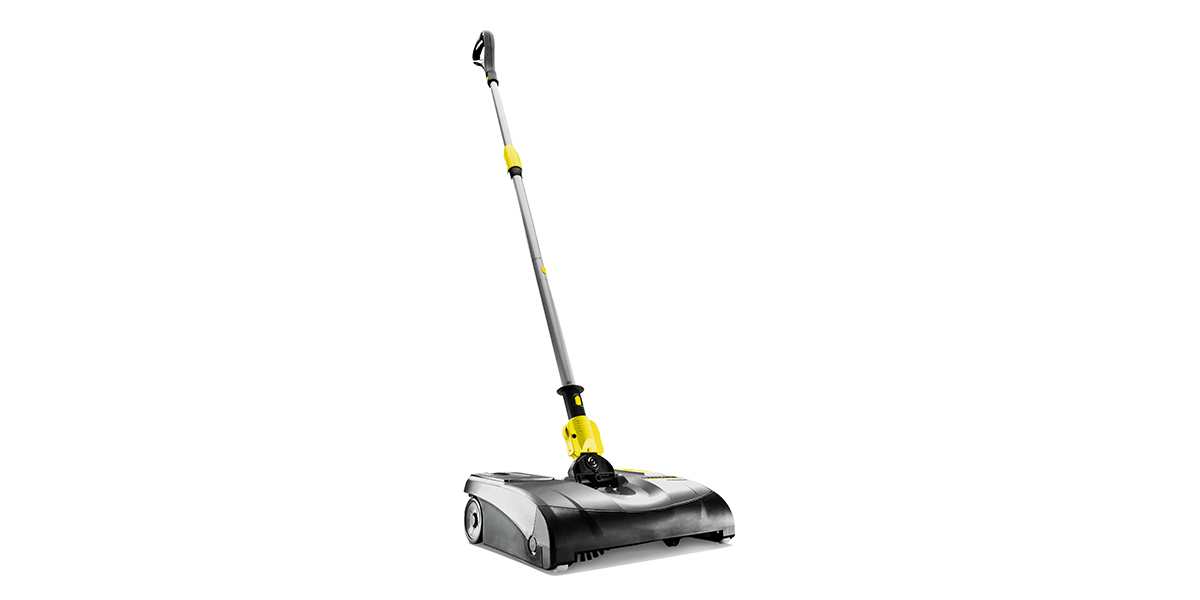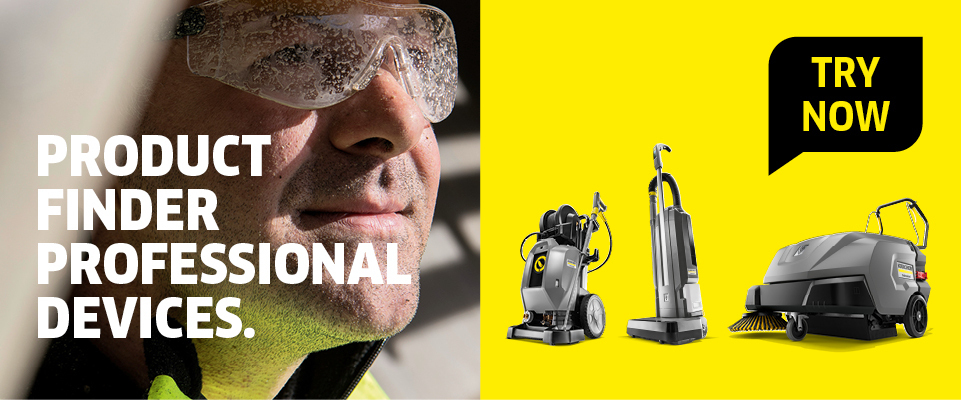Cleaning and caring for artificial stone floors
Artificial stone floors are available in countless variations, so the specific type can be selected for its material properties in consideration of the setting and the loads it will be subject to. Regular maintenance cleaning is essential to preserve the look and value of the flooring and also delays the need for the next deep clean. In any case, the right technology, the right detergent and, if necessary, a good care product make the cleaning process simpler.
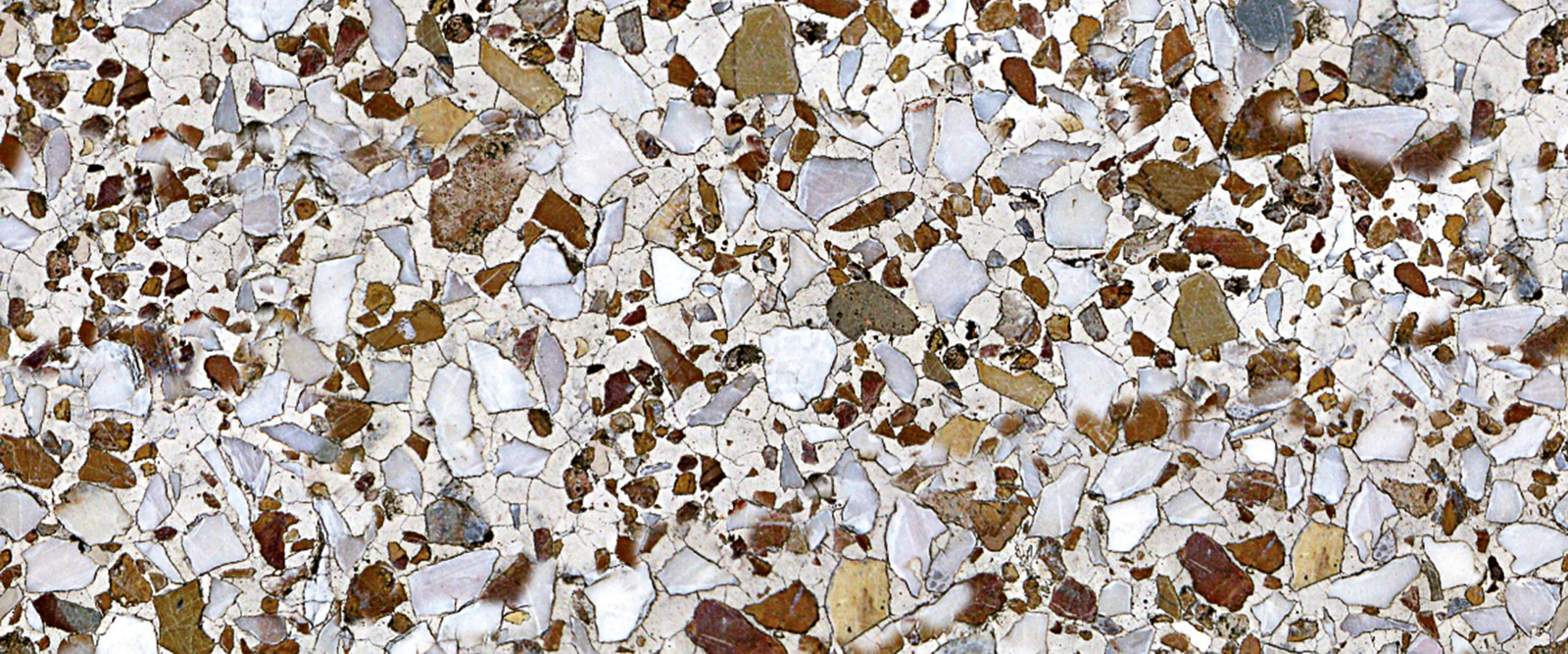
Well-kept appearance for a long service life
Artificial stone floors come in different forms: in seamless variants such as screed or terrazzo, or as slabs, such as ceramic or concrete-bound. In addition, the many variants from cast stone to fine stoneware have different properties – including anti-slip design and studs for commercial kitchens and more besides.
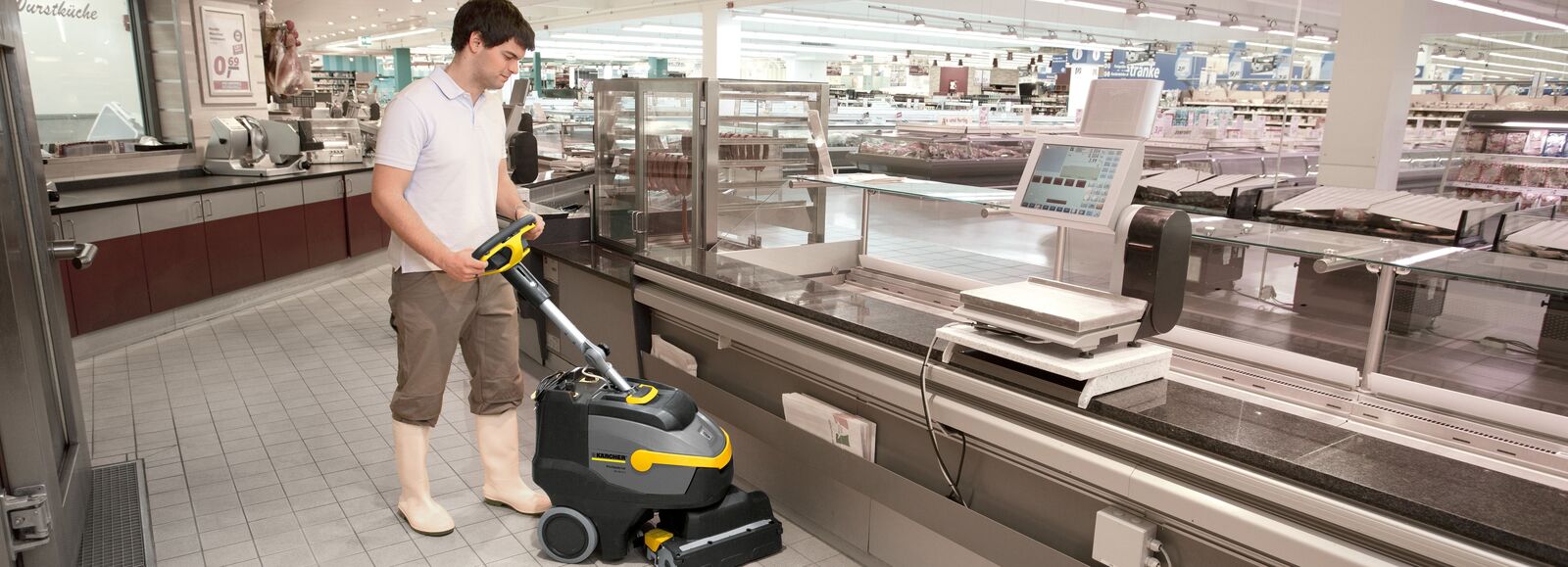
Artificial stone floors (almost) everywhere: a floor covering with countless variations
Mineral floor coverings can be split into two main groups: natural stone, such as marble or granite on the one hand, and artificial stone on the other – which covers all man-made varieties. It is almost impossible to compile a comprehensive list of artificial stone floors, but the following materials are frequently used:
- Cast stone is available in different colours and shapes. It is robust and can often be found in stairwells, supermarkets or shopping centres.
- Screed, alternatively, is laid without joints for an accessible floor covering; it is extremely resilient and is often therefore used in industrial and logistics settings. To enhance the look and the chemical resistance of the floors, a polyurethane (PU) coating is applied increasingly often.
- Clinker bricks are very resilient and popular for workshop floors, for example. They are available glazed or unglazed. Their red/yellow colouring give them a characteristic look.
- Stoneware is denser than earthenware and therefore quite a bit harder and more resilient. The material is very chemically resistant and is often used as a floor tile.
- Even more stable than stoneware is fine stone, which is highly durable and suitable for industrial environments. The unglazed version with a textured surface and studs is often laid in commercial kitchens or swimming pools to minimise the risk of slipping.
- Terracotta, which is often laid indoors, is warm in colour and has a rough texture. With the right composition and a high firing temperature, terracotta is also suitable for patios.
Cleaning cement screed
Cement screed is the most commonly used type of screed. This floor covering requires special attention when it comes to cleaning and care. This is because it not only has to withstand a considerable amount of strain, but it also needs to meet occupational safety standards at the same time. For deep, maintenance and intermediate cleaning, it therefore all comes down to selecting the right equipment.
Cleaning fine stoneware tiles
Fine stoneware tiles are a very popular, attractive floor covering which stands out thanks to its robust and slip-resistant qualities, as well as its very low moisture absorption rate. A modern and safe design material, it is impossible to imagine floor coverings without fine stone nowadays.
Safety factors: anti-slip and studs
In the commercial sector in Germany, there are certain national safety regulations that floor tiles must fulfil. The anti-slip value (R9–R13) indicates how good the anti-slip properties of a surface are. However, this property is not always achieved by means of a rough texture; fine-pored surfaces can also provide adequate anti-slip qualities. In areas that are often regularly wet and where people walk barefoot, floor coverings from the corresponding assessment group A, B or C must also be used, depending on the area of use.
There are also rules regarding the space created between studs (V4-V10), i.e. the gaps through which liquids can drain more easily. In environments with a heightened risk of slipping, R and V ratings must be high – the highest value is R13/V10. The higher the two values are, the more easily dirt can collect in the tiles, which in turn makes cleaning more labour-intensive.
Maintenance cleaning of artificial stone
Regular maintenance cleaning is essential to preserve the value and the neat appearance of artificial stone floors. Cleaning is carried out with dry and/or wet methods, depending on the degree of soiling.

Removing loose dirt: whether in tight spaces or expansive halls
Loose dirt in small spaces, such as lifts or stairwells, can be removed with a battery-powered backpack vacuum cleaner, an electric broom or by dust-binding mopping with a microfibre textile that uses electrostatic charge to pick up dirt. If larger areas need to be cleaned, it is worth investing in a sweeper. The right type of sweeper roller should be used for this – in most cases, the standard roller is sufficient, and soft rollers are suitable for very fine dust. Depending on the space to be cleaned, a push sweeper or a ride-on machine may be suitable.

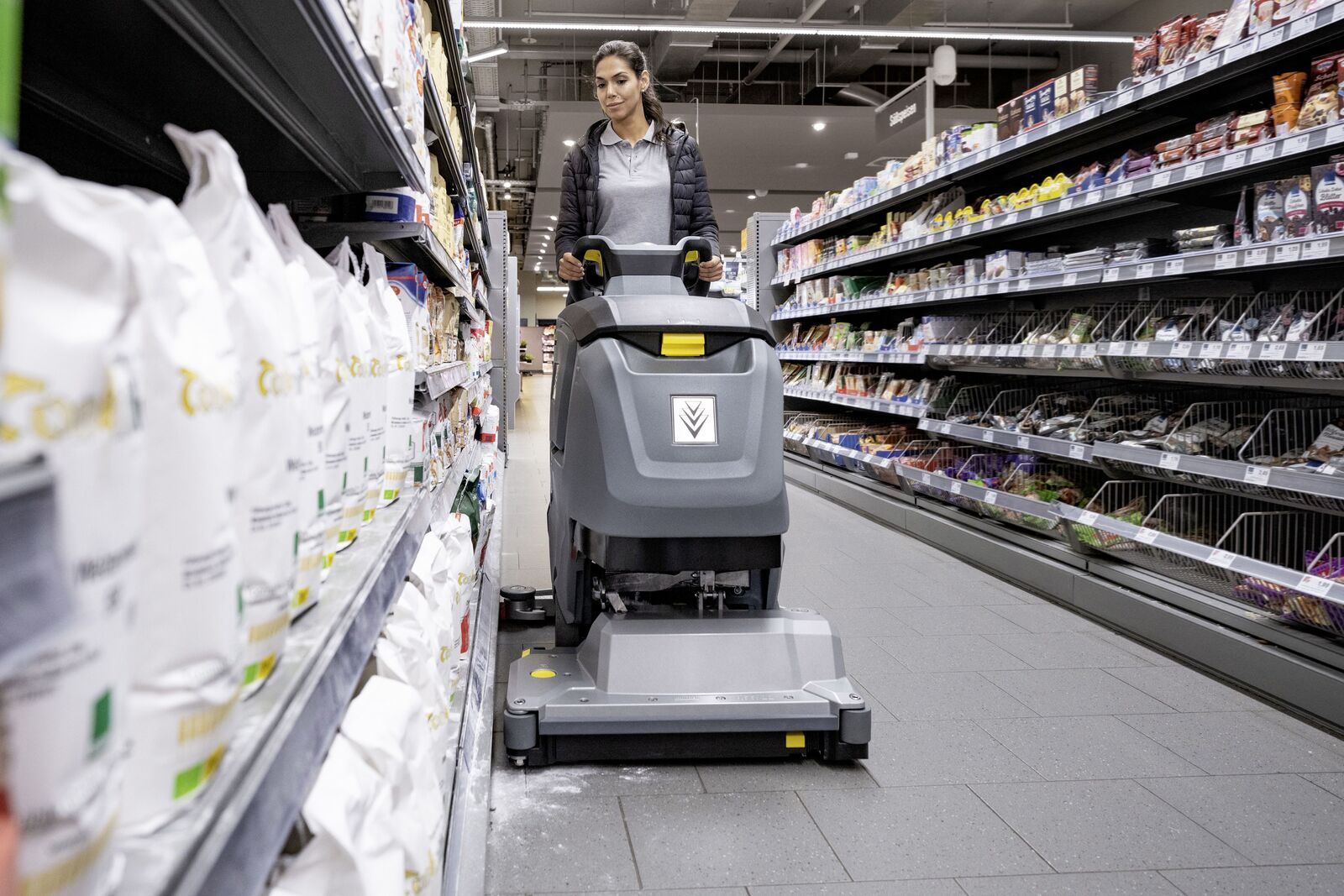
Wet cleaning with scrubber dryers: the right choice for all surfaces
It is impossible to imagine cleaning artificial stone floors without scrubber dryers, especially as the wide range of models available incorporates both compact models for smaller or awkward areas and larger machines for expansive areas. To achieve the desired cleaning result, choosing the right brushes or pads for the machines is key. Coarse-textured tiles can be cleaned particularly efficiently with high-low roller brushes. Ground and polished floors are easy to clean with disc pads, whereas microfibre rollers produce impressive results on finely textured tiles such as fine stone.
Tip 1:
An additional advantage of scrubber dryers with roller heads is that they have a sweeper drawer. This means that even coarser dirt is cleared, removing the need to pick up such debris beforehand.
Tip 2:
To give floors a lasting shine through maintenance cleaning, a green diamond pad can be attached to the scrubber dryer, which will polish the floor. This is particularly recommended for cast stone and screed.
The right suction lips should also be fitted to vacuum the dirty water back up. These come in a choice of two materials. Lips with a natural rubber content are the right choice for standard types of soiling and achieve good suction results. For oily soiling, such as lubricants or separating agents, lips made from polyurethane (PU) are recommended.
Tip 1:
If just spot cleaning is necessary, damp mopping is normally the answer, using a mop holder, microfibre mop cover and a suitable detergent.
Tip 2:
When soiling is moderate, pH-neutral or mild alkaline detergents are often sufficient for maintenance cleaning.
Deep cleaning artificial stone
When it comes to deep cleaning smaller artificial stone floor coverings, single-disc machines used with a wide range of accessories and a deep cleaner produce excellent results. They effectively loosen the dirt, then the resultant dirty water is picked up by a wet and dry vacuum cleaner. The floor is then rinsed with clean water, which is also then vacuumed back up.
Tip:
Single-disc machines with orbital technology are particularly effective, as the pad not only rotates, but also oscillates at a high frequency. This loosens the dirt from every angle.
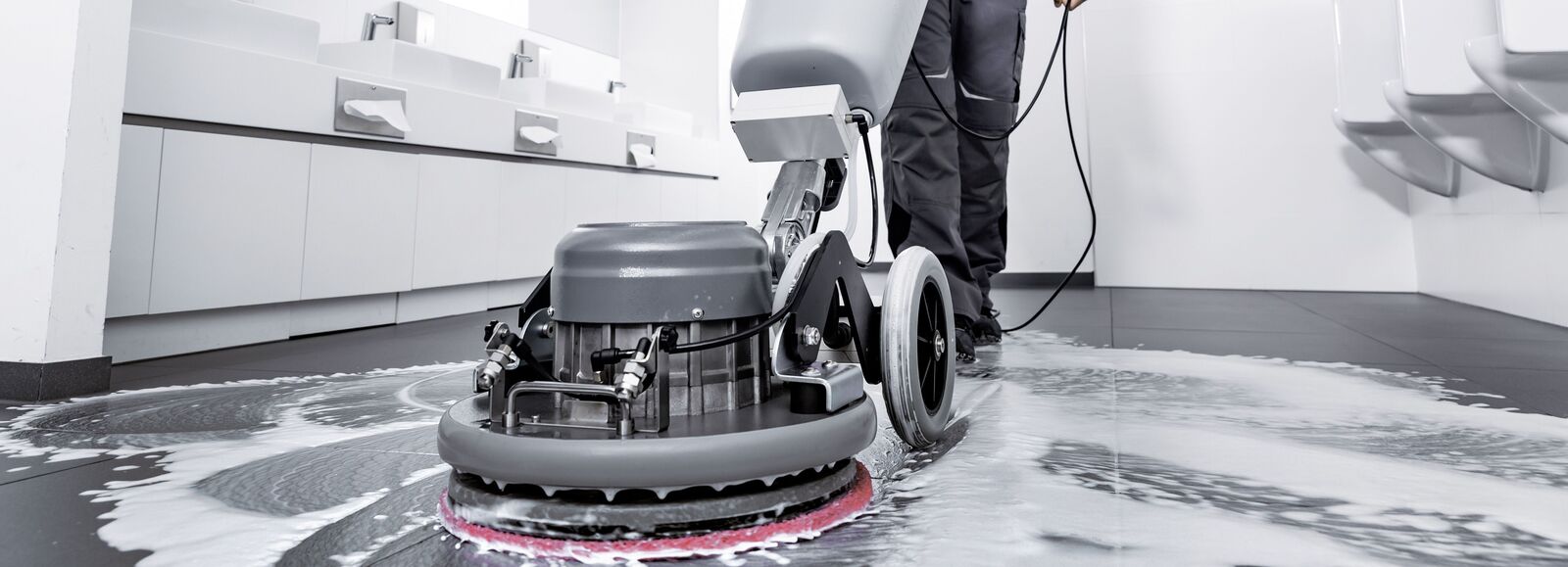
A scrubber dryer is the right choice for large areas, either as a walk-behind or a ride-on model, depending on the size of the area to be cleaned and the time frame available for cleaning. Depending on the amount of soiling, the surface can be cleaned using either the two-step method (scrub first, then vacuum) or the single-step method (scrub and vacuum at the same time).
Tip:
The use of melamine resin pads is recommended for removing any greying effect from fine stone or cast stone. These often produce excellent results even without detergent. However, a maintenance detergent can be added to the cleaning water to trap the dirt even more effectively.
Deep cleaning with high pressure and cup foam lance: the answer for toilet facilities, spas and more besides.
For floor surfaces that have floor drains, for instance, those found in washrooms or spa areas, high-pressure cleaners combined with cup foam lances are the right choice. The advantage of these is that they can be used to clean the wall surfaces at the same time. With the aid of the foam cleaning agent and air, which is added at the nozzle, they generate foam with the high-pressure jet. Best of all, it is easy to see where the detergent has been applied, and the foam adheres longer than a standard detergent, which in turn increases the contact time.
Tip:
To prevent damage, never point the high-pressure jet directly at the joints.
Surface cleaners for stubborn dirt: patios or outside areas
If the dirt is already deeply ingrained in the surface, a surface cleaner can be a good solution, provided the surrounding area can withstand large volumes of water and the surface itself is not sensitive to water. For example, patios or outside areas in general are well suited to this method.
The surface cleaner should have a rotating nozzle bar with slightly offset power nozzles attached. These apply water to the surface at high pressure and loosen the dirt very effectively and evenly. Furthermore, unlike conventional high-pressure cleaning, the operator and the surrounding area do not get splashed. Plus, a higher area performance can be achieved this way.
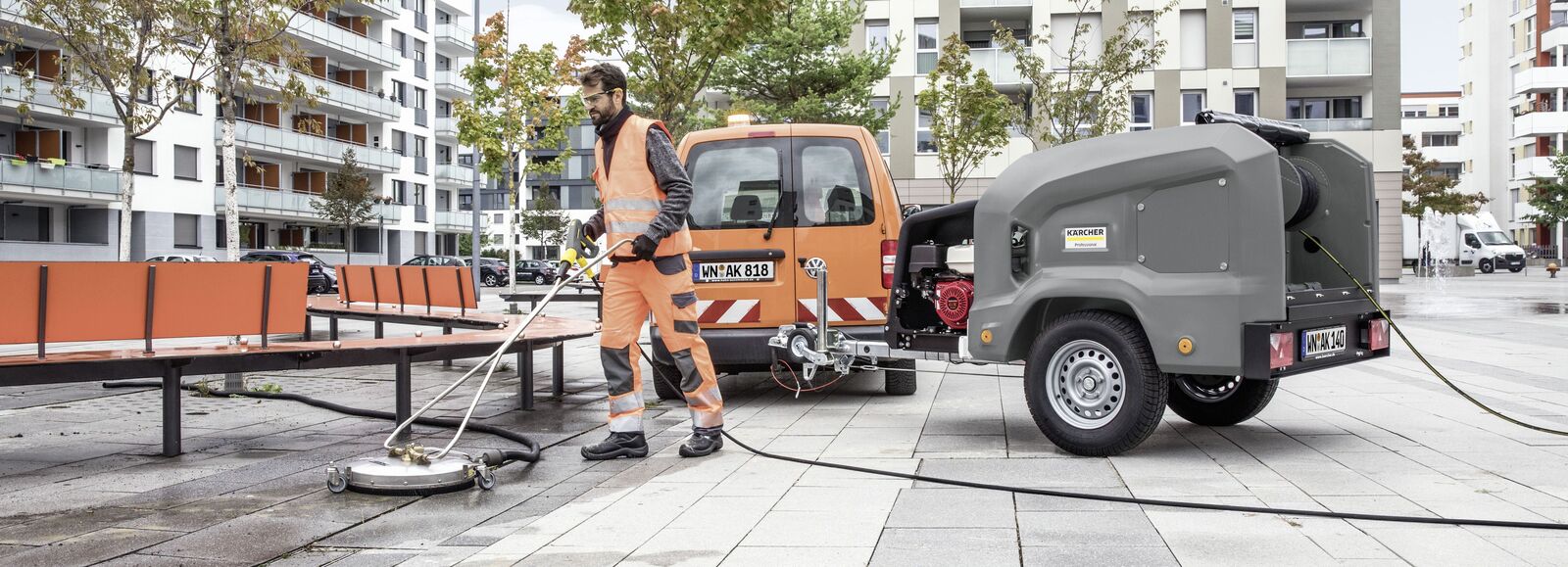
Detergents for deep cleaning: formulated for the floor covering
Many artificial stone floors can be cleaned with either acidic or alkaline detergents. Acidic detergents help tackle mineral dirt such as limescale, urine scale or rust; alkaline detergents are ideal for removing organic dirt such as grease, protein or oils.
However, it should be noted that lime-bound materials such as cast stone are not compatible with acid, since the acid dissolves the lime. At the same time, the detergent must not be too alkaline, otherwise the surface of polished floors may end up looking dull.
In artificial stone tiles such as terracotta, however, the colour tone is created by metal oxide. Therefore, when using acidic detergents, care must be taken to ensure they do not contain phosphoric or hydrochloric acid, since the derusting effect of these may lead to changes in colour.
Tip:
If the detergent used is acidic, any tile joints containing cement must be rinsed with water before use to prevent them from absorbing acid, which could otherwise cause damage.
Caring for artificial stone
Some artificial stone floors can be treated with a care product to make them more hard-wearing against mechanical stresses, to protect pores from water penetration or to alter their individual appearance.
Tiles with high levels of water absorption: protect and embellish
Terracotta and unglazed clinker tiles are examples of floor coverings that can absorb a lot of water. If such floors are oiled, the oil penetrates into the pores and protects the ceramic tiles from moisture. For a more rustic look with terracotta, what is known as buffalo stain, a wax-oil mixture that contains carbon black, can be applied. The carbon black settles in the texture, creating a pre-loved appearance.
Tip 1:
Depending on the type of tile, a wipe care product based on water-soluble polymers can be applied to increase the level of shine.
Tip 2:
The care agent should not be applied directly to the tiles, but should be applied to the cleaning textile in order to ensure even distribution.
Tiles with low water absorption: protector (usually) superfluous
Floor coverings such as fine stone have a low level of water absorption, rendering protective treatments generally superfluous. Since moisture cannot penetrate, the protector remains on the surface and runs off. If a coating has been applied to fine stone in an earlier cleaning process, it should be removed with a universal deep cleaner to prevent a film from forming.
Suitable products for your area of application
Find a wide range of technology at lightning speed – with the Kärcher Professional product finder
In no time at all, we'll show you the exact Kärcher Professional machine that best suits your specific cleaning task.

